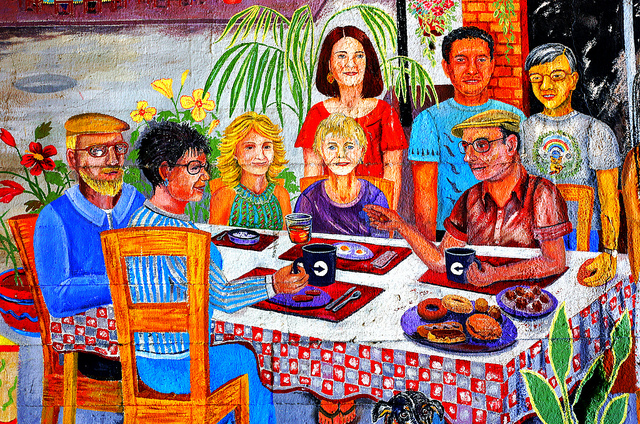For Investors, Is West Town The Next Wicker Park?
By Staff in News on Jan 12, 2014 7:00PM
Long time Chicagoans know that Wicker Park was not always the beacon to commerce that it is today. In the 1960s and '70s, this 80-acre neighborhood located just northwest of the Loop became riddled with gang activity and crime. What followed was a mass exodus of both the original Polish American population and investment funds by financial institutions.
Over the next few decades, though, community groups and the city government attempted to revitalize the neighborhood through new construction and a stronger police presence. What resulted was a gentrification of the region into a thriving beacon of new homes, restaurants, bars, and shopping establishments as property values increased and venture funds poured into the vicinity.
The neighborhood’s renovation was nationally recognized in September 2012 when Forbes magazine named Wicker Park as the fourth hippest hipster neighborhood in the United States, calling it an “artists’ community known for its galleries, music venues, boutiques, and food options.”
This development raises the question as to whether there is another district within the metropolis that is currently undergoing such a transformation beneath our very noses. A review of citywide activity over the last few years points towards the portion of West Town located just west of Western Avenue between Armitage and Grand Avenues, including both Smith Park and East Humboldt Park.
Like Wicker Park before it, an area of the city once associated with crime and gangland activity is quickly becoming a modern haven for investors and local businesses.
Over the last few years several new restaurants and bars have opened their doors to local denizens. One such establishment was a sushi joint named Kai Zan, which opened its doors in 2012 on the 2500 block of Chicago Avenue. The local eatery, opened by brothers Melvin and Carlo Vizconde (formerly of Kamehachi and Kizoku, respectively) was so popular that it purchased an adjoining space in order to expand upon its initial footprint in order to accommodate additional customers.
Just down the road, a new farm-to-table American gastropub featuring artisanal cocktails, Hunter & Tails, opened in late 2013 in a pastoral two-level space. Its popularity within the neighborhood has led to a brand new Sunday brunch offering beginning this month.
On the 900 block of Western Avenue, an older bar, named the Sportsman’s Club, was renovated last year and introduced a rotating menu of craft cocktails in a lodge-like environment. Further north at the 2400 block of North Avenue, a restaurant featuring classic Indian cuisine opened its doors in 2012 to rave reviews and lines often out the door of patrons salivating at the notion of ingesting their generously spicy portions of Chicken Vindaloo and Veggie Samosas.
The success of local eateries has not gone unnoticed by residential investors. Driving through the area, alone, one can’t help but notice the avalanche of new construction single-family homes within the area, as well as condominium developments, such as that located at the intersection of Chicago and Western Avenues.
Furthermore, developers are currently in talks with the city and the local citizens about a seven-story condominium project, with a bottom floor dedicated to commercial space, at the intersections of Grand and Western Avenues.
In addition to recent past developments, the future is bright for this neighborhood as Ald. Roberto Maldonado (26th) announced in September 2013 that the area of Division Street between Western and Cicero Avenues would be resurfaced in the coming year. The city also committed funds to replace sidewalks as needed, fix curbs and gutters, and install both new concrete bus pads and bike lanes.
With the existing extra wide sidewalk footprints and better public transportation access, many investors are exuberant at the notion of the area to be ripe for new housing and restaurants with outdoor patio spots, mimicking the commercialized hustle and bustle of the eastern portion of the city street between Damen and Ashland Avenues.
The future is bright for this area of West Town, and investors are just beginning to take notice.
By: Amol Gavankar
